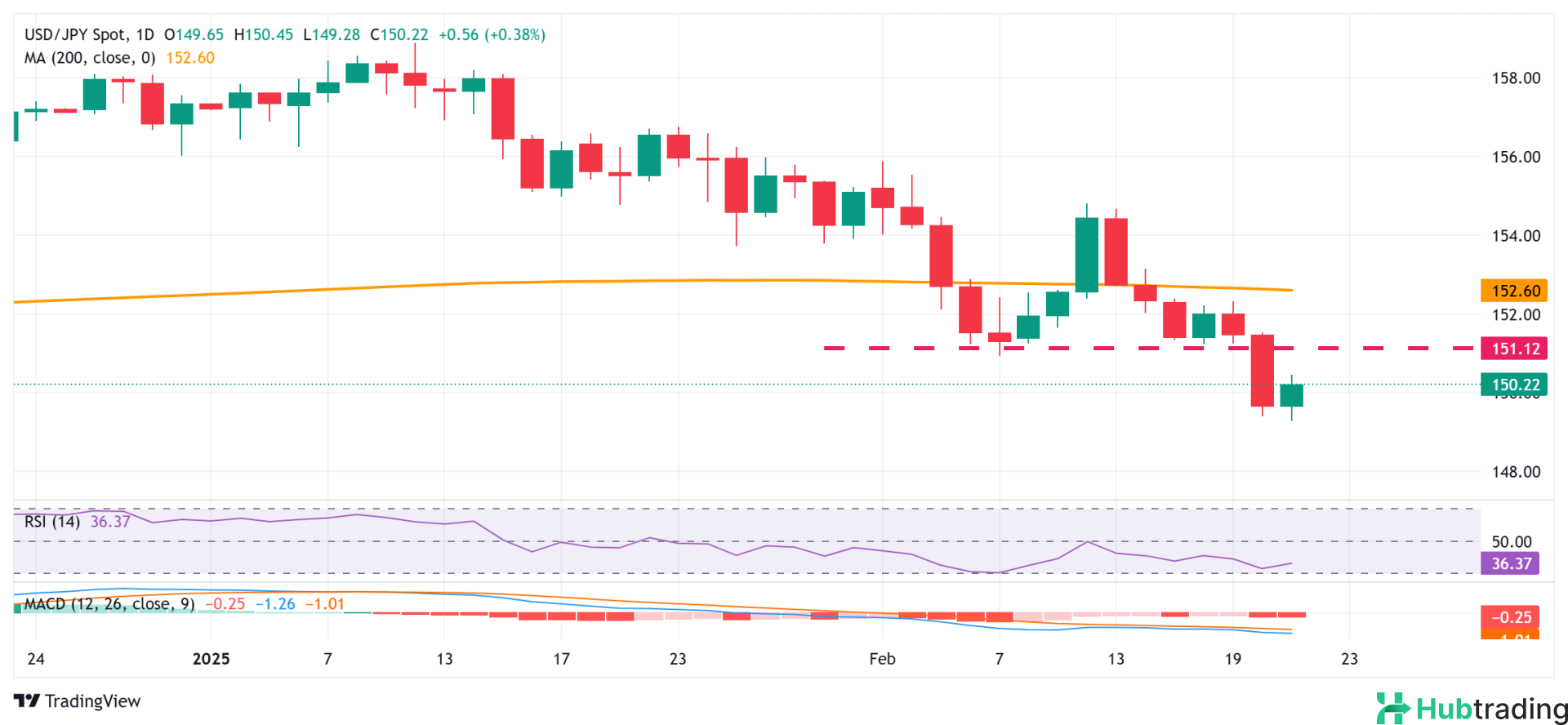- The Japanese Yen weakened following comments from Japan's Finance Minister Katsunobu Kato on Friday.
- Japan’s strong National CPI data reinforces BoJ rate hike expectations, potentially limiting JPY losses.
- Persistent USD bearish sentiment may also cap gains in the USD/JPY pair.
The Japanese Yen (JPY) weakened on Friday following comments from Japan's Finance Minister Katsunobu Kato, who warned that rising long-term interest rates could put pressure on Japan’s fiscal situation. This provided some support for the USD/JPY pair, helping it stage a modest rebound from the 149.30–149.25 zone—its lowest level since December 3, reached during the Asian session. However, the potential for significant JPY depreciation remains limited as expectations for further Bank of Japan (BoJ) rate hikes gain traction.
Stronger-than-expected National Consumer Price Index (CPI) data in Japan reaffirmed market expectations of a BoJ policy shift, leading to elevated Japanese Government Bond (JGB) yields. This narrowing interest rate differential between Japan and other major economies continues to support the JPY. Additionally, the US Dollar (USD) faces headwinds due to concerns over the US consumer sector, despite ongoing expectations of an extended pause in interest rate adjustments by the Federal Reserve (Fed).
Japanese Yen Declines Amid Intervention Talks to Curb JGB Yield Surge
- Finance Minister Katsunobu Kato warned that rising Japanese Government Bond (JGB) yields could increase Japan’s debt burden, overshadowing the strong National CPI data and triggering intraday selling pressure on the JPY.
- BoJ Governor Kazuo Ueda acknowledged that higher long-term interest rates could raise corporate funding costs but emphasized that a stronger economy could offset these impacts. He also stated that the BoJ remains ready to intervene if markets experience excessive volatility.
- Japan’s latest CPI report showed that:
- Headline National CPI climbed to 4.0% YoY in January, up from 3.6% in December, marking a two-year high.
- Core CPI (excluding fresh food) increased to 3.2%, up from 3.0%, reaching a 19-month high.
- Core CPI excluding fresh food and fuel rose 2.5%, the fastest pace since March 2024, reinforcing inflationary pressures.
- Persistent inflation concerns and expectations of sustained wage growth are fueling speculation that the BoJ may hike rates more aggressively than previously expected. This has driven the 10-year JGB yield to its highest level since November 2009, helping to support the JPY.
- A private-sector survey revealed that Japan's factory activity contracted for the eighth consecutive month in February, albeit at a slower pace. The au Jibun Bank Japan Manufacturing PMI inched up to 48.9 from January’s 48.7 (a 10-month low). Meanwhile, the Services PMI edged higher to 53.1 from 53.0, signaling resilience in the sector.
- The US Dollar Index (DXY) hit its lowest level since December 10, weighed down by weaker-than-expected US consumer spending and renewed trade policy uncertainties.
- A disappointing sales forecast from Walmart raised concerns about US consumer health, adding to fears that President Trump’s proposed tariffs could fuel inflation and further dampen spending.
- Federal Reserve officials continue to express caution regarding future interest rate cuts:
- St. Louis Fed President Alberto Musalem warned of rising inflation expectations and the risk of stagflation.
- Fed Governor Adriana Kugler stated that inflation still has "some way to go" before reaching the 2% target and that its trajectory remains uncertain.
- Atlanta Fed President Raphael Bostic took a more dovish stance, suggesting that two rate cuts this year remain a possibility, depending on economic developments.
- Traders are now focusing on key US economic data set for release on Friday, including:
- Flash US PMIs, offering fresh insights into economic health.
- Existing Home Sales and the revised Michigan Consumer Sentiment Index, which could influence market sentiment.
- Speeches from Federal Open Market Committee (FOMC) members, potentially shaping USD demand and USD/JPY movement.
USD/JPY Technical Analysis: Sellers May Cap Gains Near 151.00

From a technical perspective, the USD/JPY pair recently broke below the 151.00–150.90 support zone, extending its decline below the psychological 150.00 mark. This move is seen as a bearish trigger, with daily oscillators remaining in negative territory, suggesting that the path of least resistance remains downward.
Immediate resistance is near 151.00, followed by 151.40, with further upside potential toward the 152.00 mark. However, any recovery could be short-lived, as the 200-day Simple Moving Average (SMA) at 152.65 remains a strong resistance level.
Key support levels include 150.00, followed by the 149.30–149.25 zone (multi-month low). A break below 149.00 could push the pair toward its December 2024 low of 148.65.
With sentiment remaining cautious, the USD/JPY pair is likely to attract fresh sellers on any rally and remain capped near 150.90–151.00 in the near term.





